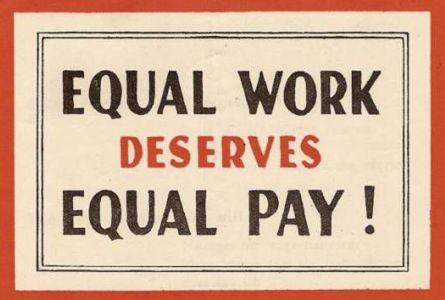Is Gender Pay Discrimination a Myth?
Published: Jan 21, 2016

The gender pay gap is a tricky, emotive subject to deal with at the best of times. As a recent Freakonomics podcast makes clear, even the best-known statistic about it—that women in the US make 77 cents for every dollar a man makes—can be problematic when teased apart.
To be clear: that ratio is more or less correct for the population as a whole.
But it's also misleading: it is possible to infer from the statistic, for example, that women are routinely paid 77% of a male colleague's salary for doing the same job—an inference that is likely false in most cases, as noted by Harvard economist Claudia Goldin, who features prominently in the episode in question:
"So, does that mean that women are receiving lower pay for equal work? That is possibly the case in certain places, but by and large, it's not that. It's something else."
So what is that "something else" that explains the difference?
The full episode of the show runs to over 40 minutes (you can listen to it or read the full transcript here), and is well worth listening to in full. It provides a detailed, nuanced discussion of many of the factors that contribute to the gender pay gap that I couldn't possibly hope to do justice to here—at least without simply retelling the podcast. Among those factors: that women tend to negotiate less hard than men, that men and women tend to do different types of work, and that there's an opportunity gap caused by hiring practices in certain industries. Each of those, to a greater or lesser extent, certainly seem to have an effect on the rates at which men and women are paid for doing the same jobs.
But when asked to identify the major reason for the difference in the overall figure, Goldin is unequivocal: "Women often take jobs that have different characteristics, different amenities."
In other words, women—even if they start out with an identical education and job function as a male peer—are more likely to take a job that offers "amenities" such as flex-time, options to work from home, and the like.
These "amenities"—which Goldin also refers to as "temporal flexibility"—almost inevitably come at a cost: promotions and raises, which tend to be awarded to the employees who perform highest, and are the most readily available when called upon by employers:
"By and large, it appears that there's just a very high cost of temporal flexibility in certain occupations. And part of this is that people don't have good substitutes for themselves in certain cases. So, you are doing a merger in an acquisition, you're a lawyer, you are a consultant — whatever it is — the client might say, "I want you there. I want you there all the time. I want to call you at 2 in the morning. I want you to be there on Sunday, on holidays. I want you to go to Japan whenever I say that you should." Well, that's a tremendous demand. So an individual who values their family time would say, "I'm not doing that." So therefore if a woman wants to — law, for example, is a good example — if a woman wants to practice law, she has a law degree, she enjoys practicing law, being a corporate counsel would give her more flexibility. That doesn't mean that she's working fewer hours than she would've worked otherwise, but she can work her hours, and she gets paid somewhat less."
As intuitive as Goldin's case is as a diagnosis for the pay gap, it doesn't automatically lend itself to an easy solution—a fact that she also acknowledges on the show. Highlighting three broad categories of solution--"Fix the infants […] Fix the men […] Or, fix the organizations and the jobs"—Goldin seems to suggest that all three will be necessary. That is, reducing the cost of temporal flexibility by simultaneously reducing the burden of childcare through initiatives such as longer school hours, inducing men to "lean out," and encouraging firms to evolve policies that ease the penalty associated with being a caregiver.
In many ways, it's a shame that this particular episode of the show was released in the first week of January; it has a lot of interesting points on elements related to the pay gap that deserve a much fuller discussion. Had it been released at a time when many in the media and commentariat were back into the full swing of their day-to-lives, rather than digging themselves out of post-holiday stupors, the reaction and discussion it generated may have been a lot fuller.
I'm planning to dig further into this topic with some of Vault's own salary data in the days ahead. Until then, let us know your thoughts on the subject in the comments below.
Read More
Guess Which MBAs Earn the Most
